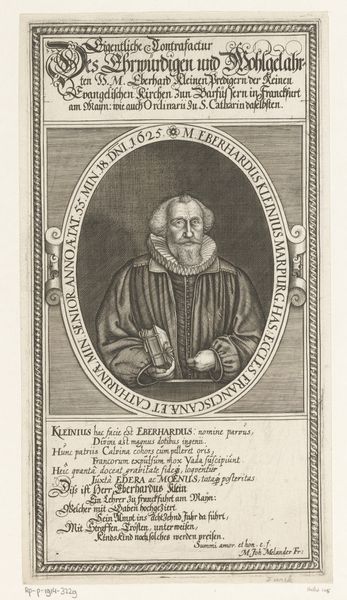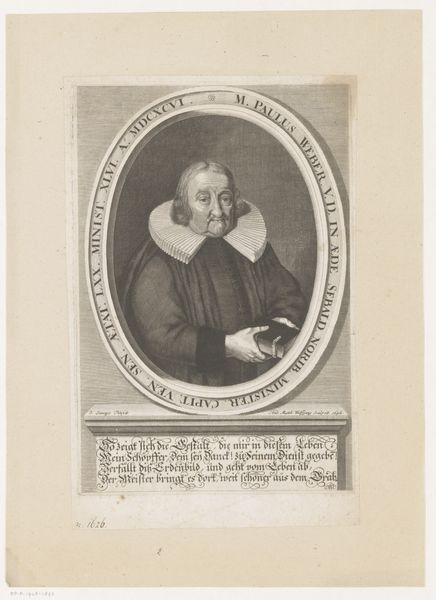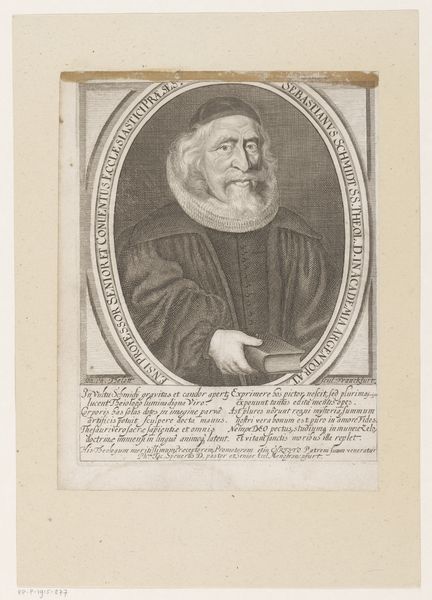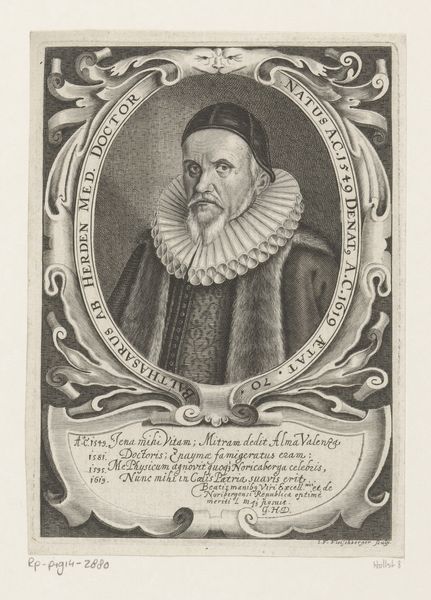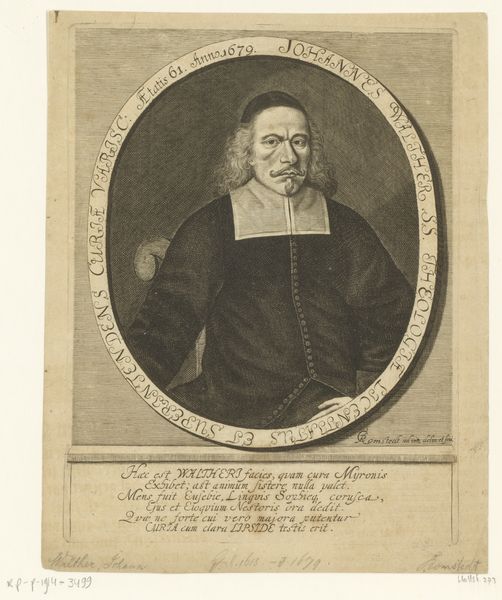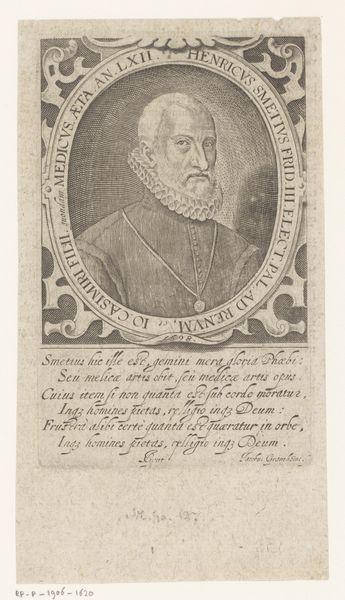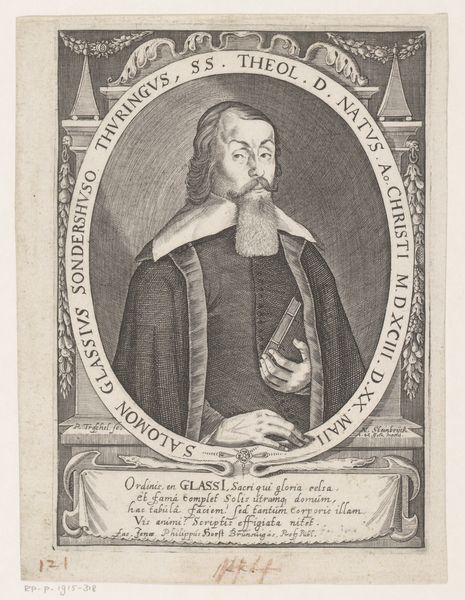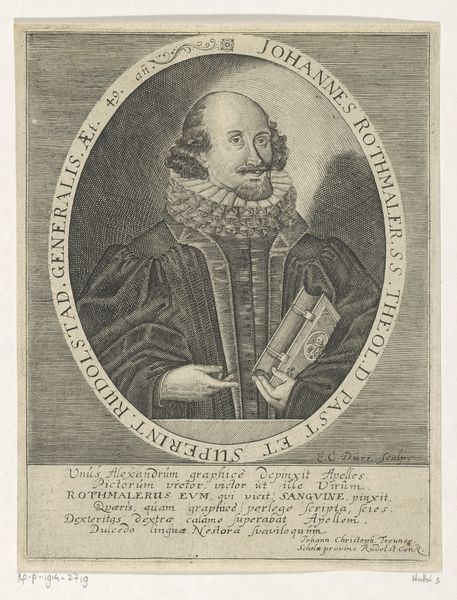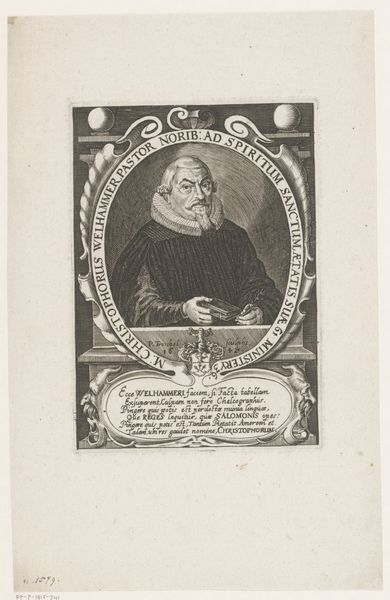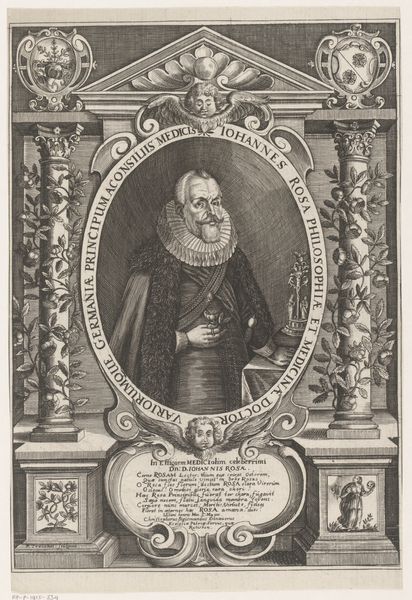
print, engraving
#
portrait
#
baroque
#
dutch-golden-age
# print
#
book
#
engraving
Dimensions: height 220 mm, width 144 mm
Copyright: Rijks Museum: Open Domain
Editor: So, this is a print, an engraving, titled "Portrait of Eberhard Klein at 63 Years of Age." It's by Sebastian Furck, from 1633. There's an interesting formality to it, yet the textures, especially in the ruff and the hair, seem quite soft. What strikes you most about this image? Curator: Well, immediately I see this within the context of the Dutch Golden Age, a period where portraiture flourished alongside a growing merchant class and a newly Protestant society. This print is clearly meant to circulate, maybe even be sold in multiples. What do you notice about the inscriptions around the oval portrait? Editor: I see Latin text; some around the portrait and then in the decorative frame beneath the image. I don’t read Latin though… Curator: Precisely. It's not just a representation of Eberhard Klein. The text reinforces his identity, status as pastor, and location, creating a public persona within a very specific religious and social framework. This engraving is participating in the creation of an ideal citizen of its time. Furck wasn't just depicting him; he was participating in the dissemination and perpetuation of cultural values. Does that shift your initial impression of “softness”? Editor: I suppose it does. The softness almost becomes a clever device to make this "ideal citizen" appear more approachable, more… human, despite the official nature of the print. It's interesting how the medium itself contributes to the message, too; as a reproducible image it reaches a wider audience and cements this image in the public consciousness. Curator: Exactly! The very act of creating a print suggests an intention to disseminate, to shape public perception. And by combining portraiture with text, the artist further controls how Eberhard Klein, and perhaps figures like him, were perceived and remembered. I wonder about its legacy in creating a particular expectation or type within the religious and academic circles. Editor: It feels like the act of creating and distributing the image, the construction of an idealized public figure, are as vital to its meaning as Furck’s artistic skill. I learned so much about the wider social and political intent that informs the piece by knowing some context.
Comments
No comments
Be the first to comment and join the conversation on the ultimate creative platform.
